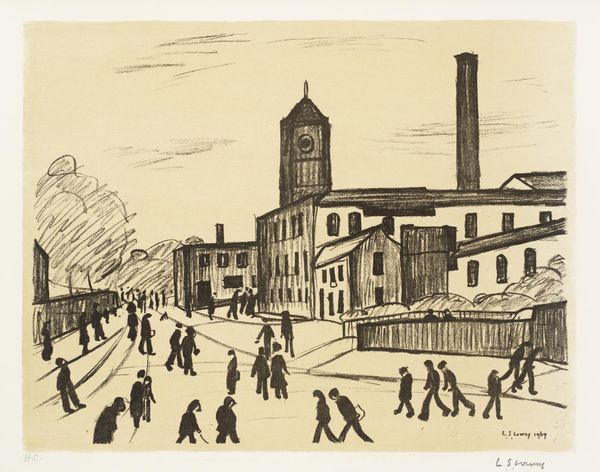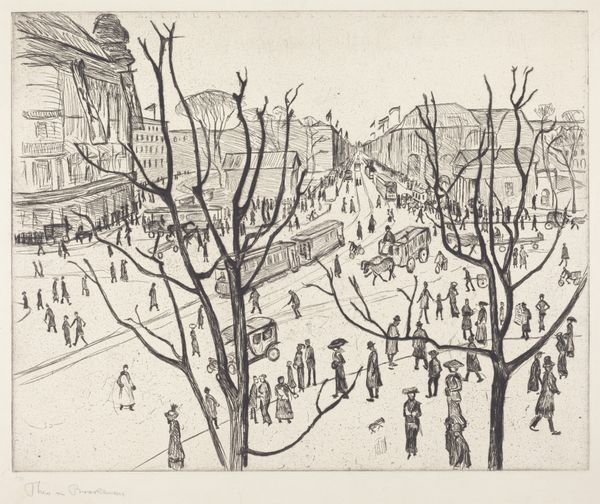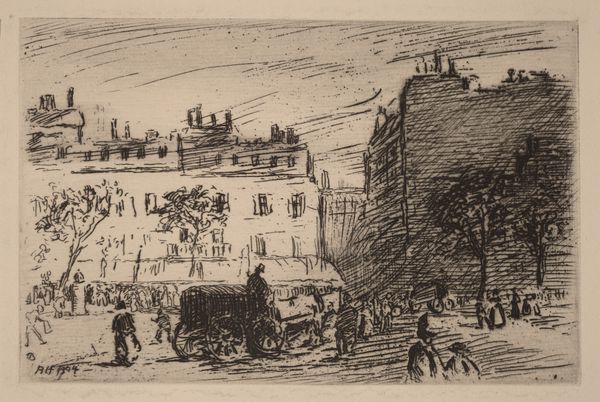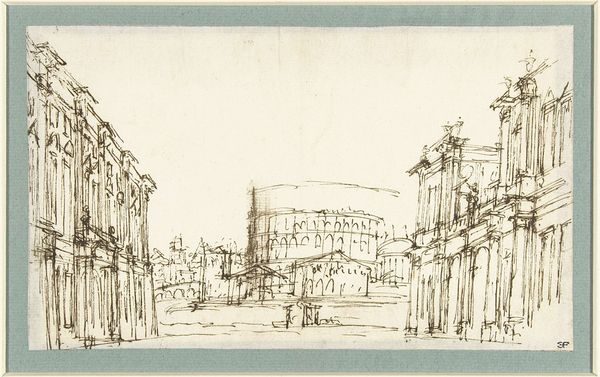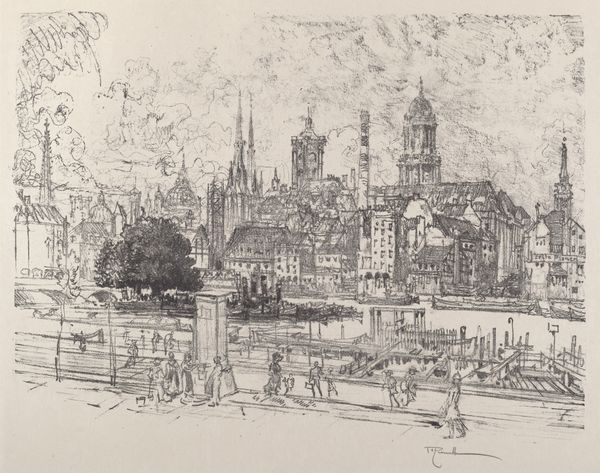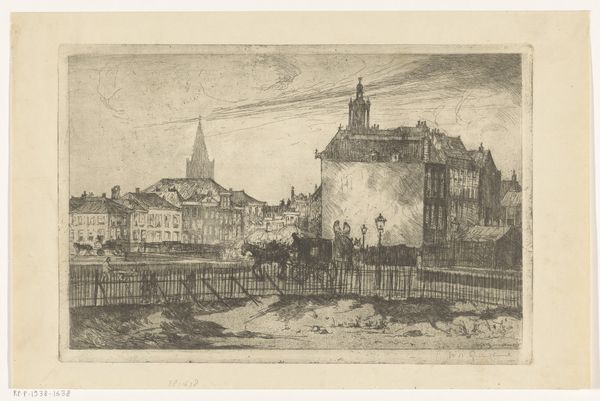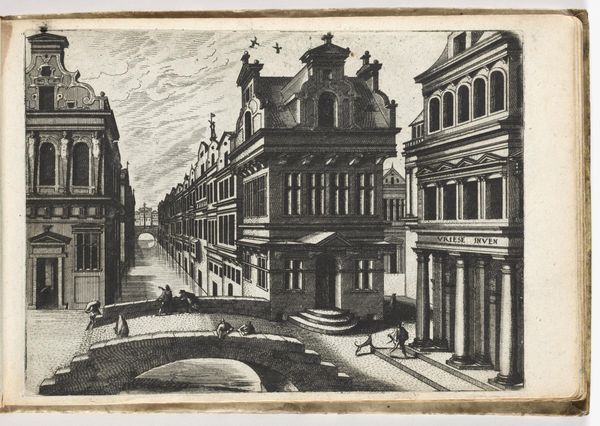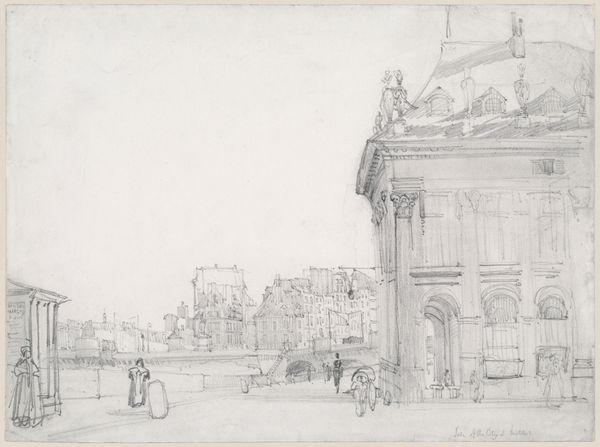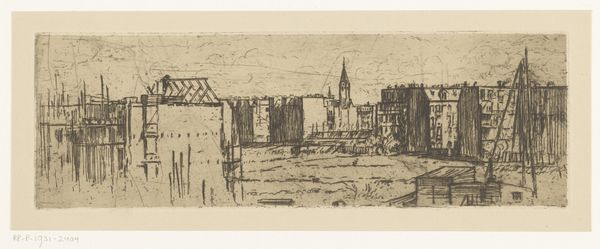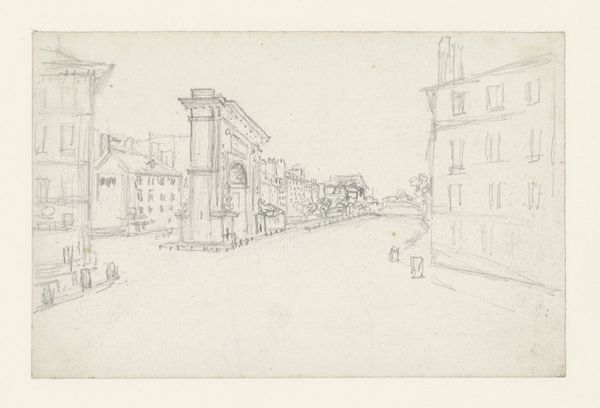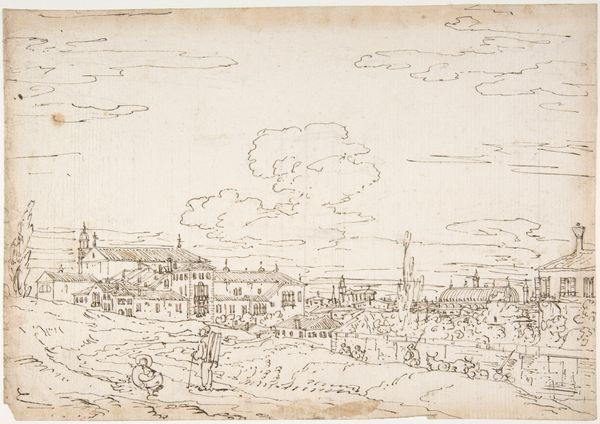
Dimensions: image: 476 x 610 mm
Copyright: © The estate of L.S. Lowry/DACS 2014 | CC-BY-NC-ND 4.0 DEED, Photo: Tate
Editor: So, this is L.S. Lowry's "Tree in a Square" from the Tate Collections. It shows a public square filled with people, all rendered in Lowry's signature style. It seems so bleak and industrial. What do you see in this piece? Curator: I see a representation of the working class in post-industrial Britain. Lowry doesn't romanticize poverty; instead, he depicts the reality of life in these urban spaces. The "tree in a square" becomes a symbol of nature struggling to survive amidst the concrete and industry. Editor: The figures seem so isolated despite being in a crowd. Is that intentional? Curator: Absolutely. There's a sense of alienation, of being a cog in a machine. Lowry's work highlights the struggles of identity and community within these environments shaped by economic forces. Editor: That's a powerful perspective. It really makes you think about the human cost of industrialization. Curator: Precisely. Art can be a mirror reflecting society's inequalities and prompting crucial conversations.
